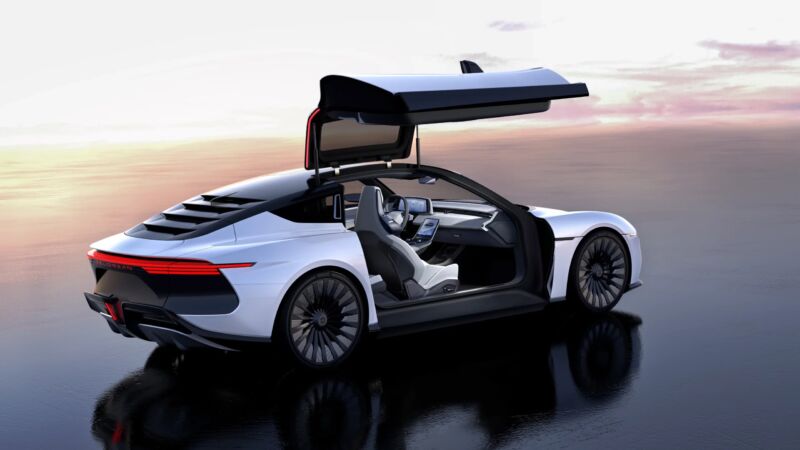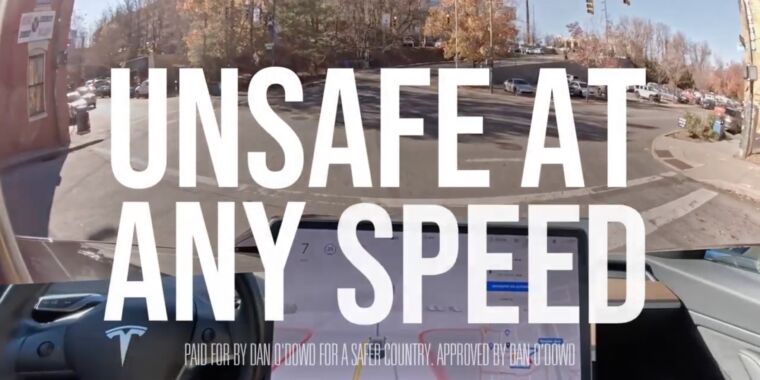
DeLorean
Back in the earlier days of the Internet, when web fora still mattered and there was no such thing as Twitter, Sniff Petrol’s Richard Porter published a now-infamous “Press Release Help For New Supercar Makers.” No stranger to cutting satire, Porter’s checklist was a reaction to a seemingly never-ending string of new British supercars announced to middling fanfare and then often never heard of again.
Sixteen years later, I can’t help but feel that we need a new version, this time not the UK’s cottage industry of vaporware supercars, but the ever-expanding field of electric vehicle startups. Specifically, I’m writing this in reaction to the “new” DeLorean, renders of which went public yesterday, causing some particularly excitable corners of the Internet to begin smoldering dangerously.
Now, this isn’t John DeLorean’s company—that went bankrupt in 1982 after producing about 8,500 examples of a single model that wasn’t really ever as good as it should have been, called the DMC-12. However, the DMC-12 acquired cult status after starring in Back to the Future, and the DeLorean name now belongs to a company in Texas that supplies spares for the stainless steel-bodied classics.
In 2016, the new DeLorean even announced that it would start making new DMC 12s, taking advantage of a new law to encourage low-volume vehicle manufacturers and replica makers.
But that was before the Internet and, perhaps more appropriately, investors got attuned to the hype over electric cars. The market for V6-powered DeLorean restomods might not be much bigger than the 325 cars allowed each year under the low-volume law, but an EV is a different proposition.
We’ve got EV fever
There are a number of factors at work here. The first is the increasingly commodified nature of the powertrain. Suppliers like Bosch or GKN are more than happy to supply electric drive units, and then you just need a battery contract and someone to do the systems integration. (OK, I realize that “someone” is doing a lot of work there.) Some engineering consultancies are even offering complete skateboard chassis onto which one can project their dreams.
While this sort of thing has been possible with internal combustion engines, the great reset that is the switch to EVs means there’s much less stigma among buyers, who often look down their noses at “bought-in” engines.
The second factor is European and Chinese new-vehicle regulations that mandate an increasing share of new vehicles emit no tailpipe emissions. As a result, many large OEMs have made grandiose promises about ending their internal combustion engine production around 2030, and it’s clear if you want to sell cars in two of the world’s three largest markets then they really better be electric cars.
And finally, there’s the success of the Tesla Model 3. It effectively replaced the BMW 3 Series as the go-to car for someone wanting to buy something upmarket with a good dose of driving dynamics, and their sheer numbers on the road tell us there is indeed a future in this EV thing (and for the capitalist mindset, an impetus to invest).
The DeLorean Alpha 5 looks little like the old DMC-12, although it does feature gullwing doors, this time large enough to allow entry into the back, for this is a four-seater. Gullwing doors that big seem like trouble right off, and I’m not quite sure where the car is hiding the necessary slab of batteries for the claimed 300-mile range. But right now its range is immaterial, because we’re talking about a bunch of renders and a physical model that will be shown off at Pebble Beach in August.
DeLorean is of course only the latest example of this EV fever. In April, an EV startup called Canoo, which had already been through a couple of upheavals was awarded a $148,000 NASA contract to build the next crew transporter. A month later, Canoo had to issue a going concern warning, so those astronauts might still be looking to hitch a lift to the launch pad.
Last year, it was Alpha Motor Corporation’s turn, which also tapped into some BttF nostalgia with its Wolf compact pickup truck. The renders of the truck looked great; just what a 21st-century Marty McFly would drive up to the lake—assuming there was a charging spot up there so he could drive home. But when people started asking Alpha questions, things got a bit weird.
Or there’s Lordstown Motors, which combined an electric truck unveiling with a Mike Pence campaign rally in 2020. At first, Lordstown claimed bulging order books (courtesy of another failed startup called Workhorse), before revealing the following year that in fact it had no orders at all.
I can’t forget to mention Faraday Future. That company must have actually gotten a copy of Porter’s checklist, because for its splashy debut at CES in 2016 it decided to show a 200 mph electric supercar instead of the “Tesla killer” SUV it promised. Flashy Byton, which poached so many German executives, is no more. And I’m still not sure what to make of the reborn Fisker.








